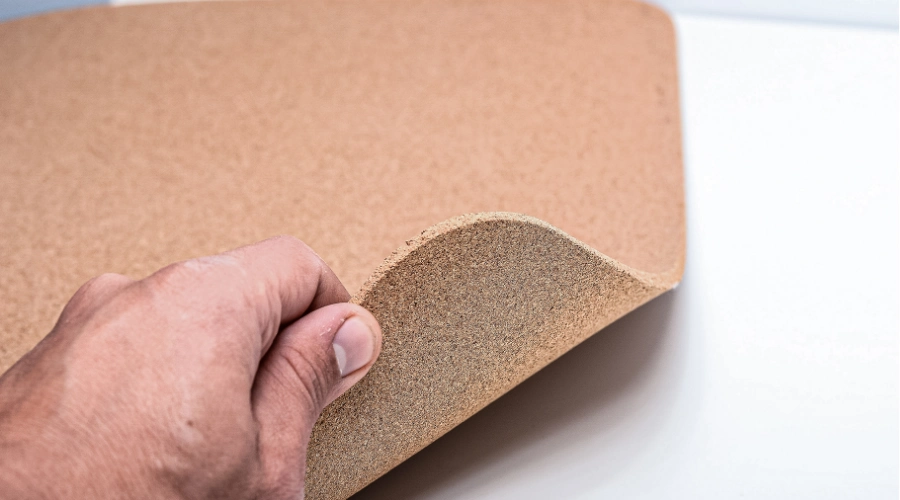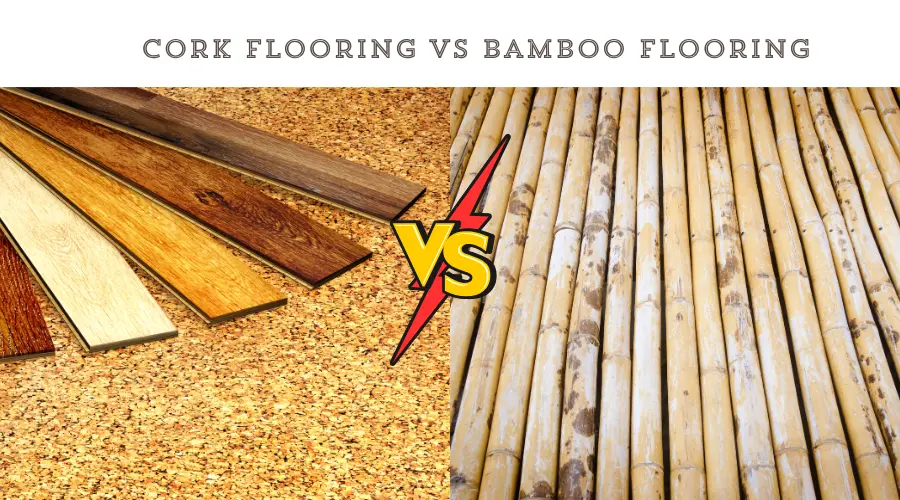Flooring is an important aspect of each house. It’s comfortable and enhances the space. Flooring materials come in many types, from natural to synthetic. Among these, cork flooring is also one type that has developed popularity over time. Cork flooring is made from the bark of the cork oak tree. It’s a sustainable, comfortable, and well-insulated option with a beautiful look.
In this Brick & Bolt article, we will share all types of cork flooring, advantages, installation, care tips, and comparisons to bamboo flooring to help you understand more details about cork flooring.
What is Cork Flooring?
The cork oak tree is mostly located in the Mediterranean regions. With its abundance, the bark of the cork oak tree is used to make cork flooring. The best part? Bark is one of the eco-friendliest types of flooring out there because it does not harm the tree during harvest; actually, it regrows.
Cork flooring benefits your home and the environment as well. Its soft, smooth top removes joint and foot pain and feels warm and comfortable to walk on. It also naturally insulates against noise and heat and keeps rooms serene and comfortable. It is also as practical as it is beautiful because it resists mold, mildew, and insects.
Types of Cork Flooring
Three major types of cork flooring suit your space as follows:
Glue-Down Tiles or Planks – Glue application on cork flooring
Adhesive is applied to install glue-down cork tiles or planks onto the floor permanently. This type is durable and ideal for highly trafficked areas. It yields a smooth look and is less likely to change over time. However, a professionally fitted subfloor and proper preparation are required for optimal performance.
Floating Cork Flooring – Cork flooring that floats
The floating corkboard’s click-lock mechanism provides glue-free assembly. Even DIY installation is easy and fast for do-it-yourselfers with this feature. The floating flooring’s capability to shift with temperature fluctuations reduces the risk of cracking risk. While they may be installed over existing floors, glue-down options may prove to be more stable.
Cork Sheets

Rolls or large panels of cork sheets are ideal for commercial use and soundproofing. They can be molded into different shapes and designs and offer better insulation. But to ensure a smooth, long-lasting surface, installation requires precision and strong adhesives.
Benefits of Cork Flooring
Cork flooring offers numerous advantages, which make it a desirable option for both homes and companies:
- It is composed of recycled cork bark and is an environmentally friendly flooring choice.
- The soft, smooth finish invites relaxation and decreases pressure on joints and feet.
- Cork has a natural property of heat absorption, thereby warming floors during winter.
- It also serves to reduce noise, making the indoor space quieter.
- Sealing and proper maintenance make it scratch, dent, and water-resistant.
- It is also naturally resistant to dust mites, mildew, and mold and is ideal for allergy patients.
Installation of Cork Flooring
The process of installing cork flooring differs depending on the type.
Step-by-Step Process:
- Preparation:
The subfloor should be clean, level and dry before installation to obtain a smooth and long-lasting finish. Glue-down tiles and sheets need a primed and sanded surface for proper adhesion. In order to give stability and insulation, floating cork flooring needs to be supported with an underlayment, which can be cork or foam.
- Installation of Glue-Down and Floating:
Apply glue uniformly on the subfloor and let it become tacky before putting in the cork tiles. Place the tiles firmly and squeeze out air bubbles using a roller. Rather than adhesives, interlocking cork boards are snapped together onto an underlayment. For natural movement, leave an expansion gap along the perimeter of the room.
- Cork Sheet Installation and Finishing Work:
Cut to size and employ a good bonding agent. Proper positioning and pressing in place result in a smooth finish. Seal the surface after installation with a protective finish to enhance longevity and moisture resistance.
Maintenance of Cork Flooring
Here are a few simple care guidelines for cork flooring:
Cleaning:
Cork flooring needs daily upkeep to maintain its good looks and lifespan. With routine maintenance, the floor retains its new look and is protected from harm. Sweep and dust the floor daily.
It keeps the surface from scratching caused by dust. Due to cork’s water-spongeing characteristic, avoid excess water.
Keeping the Floor Safe:
Preventing damage is always easier than fixing it later. The natural quality and beauty of the floor may be retained with proper care. Position rugs where there is a lot of foot traffic.
Beneath the legs of furniture, put soft pads. This repels scrapes and dents. Shades or drapes can be used to protect against direct sunlight, use shades or drapes. The floor can be turned when exposed to sunlight.
Sealing and Refinishing:
Floors can be made spill- and stain-resistant. Repeated use of a protective coating enhances the floor’s functionality to combat spills and stains. The floor may be refinished with a new coat of paint or lightly sanded to refresh its look when wear and tear reduce it through repeated use.
Cork Flooring vs. Bamboo Flooring

Cork and bamboo flooring are both sustainable solutions, but they differ in terms of material composition, longevity, comfort, and maintenance requirements. Here is a thorough comparison:
| S.no | Feature | Cork Flooring | Bamboo Flooring |
| 1 | Material Source | Harvested from the bark of cork oak trees | Derived from fast-growing bamboo grass |
| 2 | Durability | Softer, provides cushioning; prone to dents but resilient | Harder and more resistant to scratches and dents |
| 3 | Moisture Resistance | Naturally moisture-resistant but requires sealing | It can be water-resistant with proper treatment but is prone to swelling |
| 4 | Comfort | Soft and warm underfoot, reducing strain on joints | Firm and rigid, less forgiving on feet |
| 5 | Sound Absorption | Excellent at dampening noise and vibrations | Minimal sound absorption; can be noisy underfoot |
| 6 | Installation | Available in glue-down, floating planks, or sheet format | Available in nail-down, glue-down, or floating varieties |
| 7 | Maintenance | Requires periodic sealing; sensitive to excessive moisture | Easier to maintain; regular sweeping and occasional refinishing required |
| 8 | Eco-Friendliness | Highly sustainable; regenerates without harming trees | Sustainable, but harvesting may involve deforestation if not responsibly sourced |
| 9 | Aesthetic Appeal | Offers a warm, textured appearance with natural grain patterns | Sleek, modern look with various stain and finish options |
| 10 | Cost | Mid-range; slightly higher for premium options | Generally more affordable, but high-end bamboo can be expensive |
Conclusion
Cork flooring can fit into any kind of interior design style. From modern minimalist spaces to more traditional home decor, cork flooring can complement various aesthetic preferences. Its natural warmth and unique texture add character to any room. With the numerous styles it comes in, you can quickly find a cork floor that fits your style and interior design. With good care, these floors are able to have their great appearance and feeling for several years and are a worthwhile long-term investment. Brick & Bolt is dedicated to bringing materials which provide a cozy way of life for our customers. Fulfilling our promises helps us succeed in the industry.

